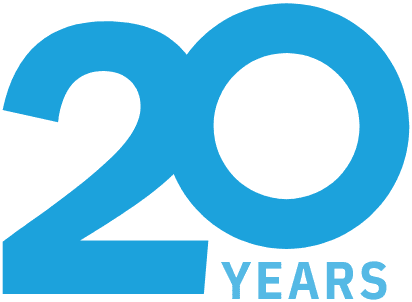Before the rise of technology, managing medical records was a straightforward process of storing thick, colour-coded paper charts in filing cabinets or on office shelves. As practices have evolved and diagnostics and analytical tools have advanced, records management has rapidly changed. Healthcare offices are now generating and retaining more patient information than ever before, including paper and electronic records.
Medical professionals have a legal and ethical obligation to protect patient information and properly manage records for pre-determined amounts of time. Failure to do so can result in patient distrust, data breaches, compliance violations and medical errors. As a result, understanding the best practices and procedures regarding medical records management is essential to protect patients and the providers that care for them.
What is Medical Records Management?
Medical records management refers to a system of procedures and protocols that govern and control patient health information (PHI) throughout its entire lifecycle. From the moment a patient’s record is created, physicians must appropriately store, secure, maintain and retain health records. When the retention term expires, the records must be properly destroyed to protect patient privacy.
In Canada, provincial/territorial legislation and professional regulatory authorities, such as the College of Physicians and Surgeons of Ontario (CPSO), specify the period of time that healthcare organizations are required to keep clinical records. The CPSO states that physicians are required to keep paper and electronic medical records for 10 years from the date of last entry or 10 years from the date when the patient reaches the age of majority (18 years old), or until the physician ceases to practice.
Why Are Medical Records Important?
Whether in written or electronic form, medical records facilitate good patient care and safety. Clear and legible records are essential for legal, professional, institutional and ethical obligations, and can be used as evidence should patient care be questioned. Medical records also allow subsequent physicians to understand patient medical conditions, diagnoses and treatment plans, and ensure that shared information is communicated between providers.
Benefits of Paper Medical Records Storage
For hospitals, clinics, nursing homes or other medical settings that are transitioning to EMR systems or have a surplus of paper files that have not reached their medical records retention period, off-site storage is an affordable, safe and secure solution with several benefits:
1. Improve Regulatory Compliance
In Ontario, the Personal Health Information Protection Act (PHIPA) is the province’s health-specific privacy legislation, which governs how medical documents may be collected, used and disclosed within hospitals, psychiatric facilities, laboratories and ambulances services. PHIPA also requires Canadian medical providers, such as physicians and surgeons, nurse practitioners and other health professionals, to ensure that records are securely stored, transferred and properly destroyed to protect patient confidentiality.
By storing information with a medical records management provider, health records are protected from theft, loss and damage for their entire lifecycle. Medical organizations are also better equipped to manage retention periods to comply with government record-keeping requirements, maintain an audit trail and avoid fines.
2. Reduce Space Requirements for Medical Records
Storing records onsite uses expensive office space that is better utilized for patient care. Clinics must also invest in storage supplies, such as filing cabinets, file boxes and storage shelves, to contain vital records. As more records are amassed, space and storage supply requirements increase, as do the costs.
By outsourcing record storage to an off-site facility, clinic staff have more room to work and treat patients. As the practice grows, it is easier to scale operations without having to find and pay for additional office space to house paper medical records.
3. Support Continuity of Care
Continuity isn’t limited to major corporations and institutions. Clinical organizations must also protect patient data to ensure a continuum of care during natural disasters, cyber-attacks, technology failures and other emergencies.
A medical records management plan that includes off-site document warehousing ensures patients will receive the best care at all times. Authorized clinical staff will also be able to access paper medical records and electronic health information at all times.
4. Improve Efficiency, Productivity, Accuracy and Accessibility
When in-house staff must manage, store and locate records, productivity decreases and there is a greater chance of data loss. Improperly managed paper records can also lead to malpractice, such as medication errors, missed diagnoses, treatment lapses and other potentially life-threatening events.
Using a records management provider to store resources off-site increases the accessibility of patient information, allowing healthcare staff to provide better, more efficient and accurate care. Clinical teams also are more productive by being able to share information and transfer charts quickly and easily.
5. Increase Security of Paper Medical Records
PHI contains all sorts of private data – from diagnostic, treatment and care results to genetic findings and health insurance-related data. With identity theft on the rise, vulnerable information can fall into the wrong hands to gain unlawful access to physician care, prescription medicine or medical benefits. This form of fraud not only damages patients whose identities have been stolen, but it costs the healthcare system, insurance providers and taxpayers.
Working with a medical records service is the most reliable way to safeguard PHI from fraudulent activity and identity thieves. Charts are housed in a facility with security systems, 24/7 video surveillance and security personnel to prevent unauthorized access. Proper fire protection and climate controls are also in place to prevent medical record damage or loss.
Securely Store Your Medical Records with Blue-Pencil
Don’t put patient records at risk by keeping them on-site. By storing medical records with Blue-Pencil, you’ll have the peace of mind that your information is protected throughout its lifecycle in our climate-controlled facility with 24/7 surveillance and strict security protocols.
With our service, records are indexed and scanned every step of the way to ensure a complete chain of custody. We can also create and implement a written medical record storage policy to ensure compliance with privacy laws. When retention periods expire, unwanted charts are removed from your inventory (with your permission) and our destruction services will see that all records are securely shredded.
When you need access to a patient’s important data, retrieval is one click away. Paper documents can be physically delivered or scanned and sent in electronic format to keep your confidential information accessible. You can also centrally manage your account online to order records, access your inventory, generate reports and more. And since Blue-Pencil charges only a few dollars per box each year, our records storage services are a safe, scalable and affordable long-term solution.
To learn more about Blue-Pencil’s medical records storage and destruction services for your practice, contact our team to request a free quote.

